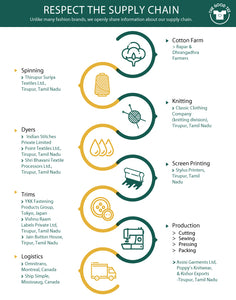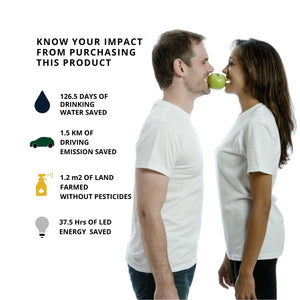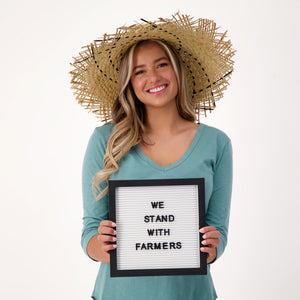To Buy or Not to Buy? 10 Questions to Ask Yourself To Help You Shop More Sustainably

Show of hands for all those who are guilty of shopping online mindlessly during the lockdown? Okay, I admit it. I’m guilty of doing the same. Many of us have been living isolated lives, spending most of our time in front of our screens working from home. We barely step out or get to meet people anymore and the easiest way to divert our minds from the current situation is online shopping. I call it escapist shopping. It gives me momentary pleasure and in that moment of procrastination I do convince myself that everything I’m buying is something I have wanted for a long time. Later I just end up feeling guilty for buying clothes that I know I won’t even get a chance to wear. It’s a vicious cycle, we end up buying more than we need which has a direct impact on the planet. We demand more textiles and produce more waste which only end up in landfills if not carefully chosen from sustainable brands. So what's the solution? How do we feel good about our purchases without impacting the planet negatively?
Today we have access to so much information about living a sustainable life and making responsible choices that it’s not difficult to pause a moment and ask ourselves relevant questions before indulging. Here are the top 10 questions that I have started asking myself before giving in to the temptation of the simple click and buy option online.
-
Can I buy this second hand?
We all love a brand new outfit rather than a second hand or pre-owned clothing which still has a stigma attached to it. We all are guilty of wanting the hottest look but do you ever think about the amount of textiles that end up in landfills? Humans produce approximately 14.3 million tons of textile waste every year out of which only 15% gets recycled. Unbelievable! Don’t you think it’s high time we go back to simpler times when hand-me-downs from siblings and neighbors was the way of life? I remember even sporting my mom’s teenage outfits when I was a school girl and I wore it with pride. So why not keep an eye out for those timeless pieces or just good condition second hand clothes that can be easily worn for some more years than just giving into mass produced fast fashion? We could definitely start from within the family itself, ask for hand-me-downs, go to value villages or thrift shops to pick up that rare fashionable piece. Give it a thought.
-
Can I shop small?
We’re living in unprecedented times and we all know the impact it has had on small business. If we are shopping then why not support small businesses, women-owned brands, sustainable brands with values that appeal to you instead of fast fashion corporations. Do your research, opt for local and ethical brands and help businesses that are out there trying to make a difference. Make every dollar you spend, count. -
Can I mend or upcycle something I already own?
WFH (work from home) has its advantages. We can save up on that travel time to work and devote it to do something creative instead. Indulging in creative projects is definitely good for our mental well-being too. Before replacing that stained shirt with a new one why not give it a new life by trying out a fun DIY tie-dye activity or experimenting with some embroidery to fix that tiny hole. You can start by trying out The Good Tee’s sustainable dye kits with all natural ingredients and watch the instructions to use the kits here.


-
Will I actually wear this?
Now let’s be realistic. We sometimes just end up buying clothes that are not really our size or style. Avoid buying clothes that you think look good on others but aren’t really of your taste and definitely don’t buy sizes that you wish to fit into some day. Only buy stuff that you will actually wear for a long time to come. -
Is it comfortable?
Over the years I have realized that being comfortable in what I wear actually boosts my confidence. Some clothes may look great but if I’m not comfortable in them I mostly don’t end up wearing them again and they just catch dust in the back of my wardrobe. So make that a rule, buy only clothes in which you are comfortable and you’ll wear them again and again.

-
Am I buying something that is sustainable?
Sustainable options are not difficult to find anymore. Buy materials that are biodegradable such as cotton and not avoid man-made fibres such as polyester which is just plastic. Look for labels that support sustainable and ethical production of clothes and follow practices that benefit not just the people but also the planet. Fairtrade certified organic cotton clothing is a good place to start.

-
What is the true cost of the item?
It’s always so tempting to give in to those flash sales right? But no brand will ever incur a loss just so that you can have that cute dress at an unbelievable price. Think about the true cost of the item. If you’re getting it for so cheap then how are the farmers and workers who make your clothes get paid? Always research and find out the true cost of the item, supply chain transparency is the key here. Another thing to keep in mind is how much are you spending on a clothing item and for how long does it last. This determines the cost per wear. Cost per wear is simply a calculation that enables you to see the lifetime value of a purchase and how much it costs you every time you wear it. When clothes are produced in the fast fast fashion way, chances are that they will be worn very few times, either because the trend goes out of style or the quality of the clothing goes down very fast. This means you will end up buying more clothes in a certain period of time and end up spending more too. Read more about cost per wear here.
-
Who made my clothes? Does the price look fair?
Remember that a lot goes into making clothes, a lot of people and a whole supply chain, all of whom need to be paid. Yes, clothes are still made by people and not machines. Before clicking that shop button, stop and think about it. Do you know who made it? Is the brand open about its supply chain? Ask yourself if a brand selling $5 or $10 shirt or dress is paying fair wages to their workers. It’s practically impossible. Don’t contribute to that problem, choose wisely.
-
How long will I wear this?
If the outfit is too trendy then it is definitely short-lived too because just like that it’ll be ‘so last season’. Buy timeless and classic clothes that never go out of style.
-
Is this an impulse buy?
Finally that last question. Do I really need more clothes in my wardrobe or I’m just buying out of habit or impulse? Just because I have put a picture on Instagram doesn’t mean that I can’t wear that outfit again, so I probably don’t need to buy impulsively because I already have the clothes I need.
Being sustainable ultimately comes down to being mindful of what we actually need and taking that moment to ask ourselves important questions rather than making rushed decisions. The key here is quality over quantity. We don’t need so many clothes, we need the right clothes that are made ethically and reflect our values and personal style. Let’s normalize repeating clothes, buying less, buying sustainable and don’t forget to keep going back to the above questions to help you shop sustainably each time.







Leave a comment